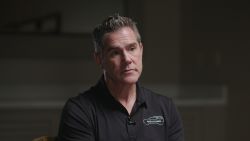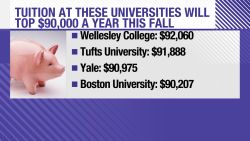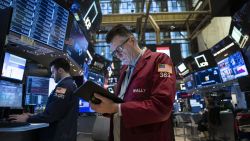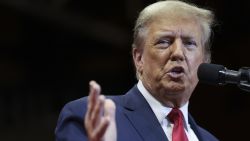The Dow and the broader stock market had another volatile day Thursday, as traders came to grips with another damaging economic report and rising odds of a Federal Reserve interest cut this month.
But after two days of decline, the Dow (INDU) closed up more than 120 points, or 0.5%, higher. Since Tuesday, the index has fallen more than 700 points.
The S&P 500 (SPX) climbed 0.8%, and the Nasdaq Composite (COMP) finished up 1.1%.
Stocks have tumbled over the past days, on worse-than-expected economic data and worries that the US manufacturing sector’s problems could be spilling over to other parts of the American economy.
On Thursday, the Institute of Supply Management on Thursday reported worse-than-expected growth for the US services sector.
That initially spooked markets for the third straight day. Stocks turned sharply lower following the closely watched report, with the Dow falling as much as 335 points at its lowest point.
But stocks rallied back, recovering their losses by midday, as investors’ hopes of a Fed rate cut increased dramatically. Expectations for a quarter-percentage-point interest-rate cut by the Federal Reserve jumped above 90%, compared to 77% on Wednesday and less than 50% last week, according to the CME FedWatch Tool.
Another reason stocks bounced back may be that “we went a little too far, too fast,” and investors might be buying the dip, said Tom Kennedy, head trader and portfolio analyst at New England Investment & Retirement Group.
Signs that the US economy is slowing could trigger a series of rate cuts or other forms of stimulus from the central bank. That typically helps boost markets, although bad news isn’t always good news: Lower interest rates are good for stocks, but the environment that tends to necessitate monetary easing usually isn’t.
The manufacturing sector has contracted for two straight months, hurt by the ongoing trade war with China and slowing global demand. But the services sector is by far the largest American industry. Although still growing, it is just barely expanding, according to ISM: The non-manufacturing index for September fell to 52.6, compared with 55 expected. A reading above 50 indicates growth.
“Global manufacturing is facing plenty of of headwinds and now, that is spilling over into services,” wrote Jennifer Lee, senior economist at BMO.
Prices largely remained in check: Markit’s services inflation index was in line with expectations at 50.9.
“And the various services sectors will feel the hit even more once the new tariffs on European goods kick in on October 18th,” Lee said.
The United States plans to impose import tariffs on $7.5 billion worth of European-made goods as soon as October 18. The new tariffs follow a ruling against the European Union by the World Trade Organization, saying that Airbus was improperly subsidized.
Investors will also be particularly attuned to Friday’s jobs report. So far, US consumers have kept the economy growing in part thanks to a strong jobs market. Investors are now nervously looking for cracks in that foundation.
























